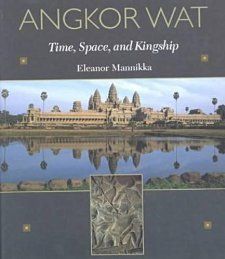
Bringing the principles of 12th-century Khmer temple architecture to the modern world, this text finds that the key to understanding the temple lies in the measurement system used by its original builders.
By translating metres into cubits, the author uncovered a highly sophisticated system of philosophical and religious principles expressed in the temple measurements themselves. The measurements connect the temple to the stars and the cosmos, bridge the gap between human and divine realms, help unite the king and his deity - in short, they define how time, space, kingship and divinity exist inseparably from each other.
From Publishers Weekly
For nearly a quarter of a century, Mannikka worked to unravel the logic and symbolism that guided construction of Angkor Wat, the famed 12th-century Hindu temple in Cambodia. Portico by galley by apartment, she links the temple's dimensions to the heavens and to Southeast Asian history. The book, a cross between doctoral dissertation and love letter, has a structure that reflects the temple-as you read the book, you figuratively walk through the building, aided by 209 illustrations (12 in color) and by Mannikka's poetic tributes to the ruin's stones and corridors. The author hopes her book will help form a general paradigm for use in analyzing other temples, but many of her techniques could apply to secular structures whose origins have been obscured by time. Mannikka's growth as a scholar is another subtext, and her honest assessment of what she had to learn to fully appreciate her subject is refreshing ("In 1972," she writes, "my knowledge of astronomy was limited to the shape of the Big Dipper"). Historians, architects and those interested in Eastern religions will compose the main audience for the book, but it is also an ob
Copyright 1996 Reed Business Information, Inc. --This text refers to an out of print or unavailable edition of this title.
Review
"Magnificently illustrated and richly detailed...an invaluable reference work." -- Choice
"[Mannikka] demonstrates a willingness to explore the monument within a specific historical context so as to uncover its underlying symbolism." -- Royal Asiatic Society Journal MsSVig

















